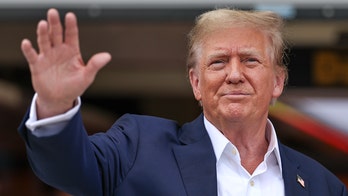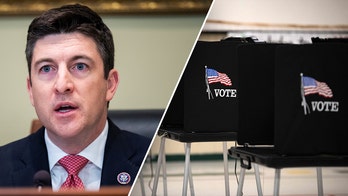Kurtz: Does the White House talk too much?
'MediaBuzz' host Howard Kurtz weighs in on the Trump administration's frequent explanations to the media
I was watching President Trump during a press availability after he met with GOP leaders on the health care bill, when he said this:
“Fake news—I watch, I say that’s not the bill we’re passing…
“ObamaCare is dead. Only because everyone knows it’s on its last dying feet, the fake news is trying to say good things about it. Fake media. There is no good news about ObamaCare. ObamaCare is dead.”
In other words, all those stories about how the current law covers millions more people than Trump’s proposal are bogus.
Over the weekend, after the awkward, no-handshake photo op with Angela Merkel, Trump tweeted:
“Despite what you have heard from the FAKE NEWS, I had a GREAT meeting with German Chancellor Angela Merkel.” And then said NATO members need to pay more.
This is Donald Trump in a nutshell, always on offense against the press and his opponents. The man is a constant newsmaking machine without an off button.
This in my view is a mixed bag. His in-your-face style is what got him elected, but he also talks and tweets his way into trouble.
But the Washington Post thinks this is a problem. Leading off with Trump at a Nashville rally, attacking the “terrible ruling” by a judge who blocked his revised travel ban, the paper says:
“The episode was just one of numerous examples of Trump and his advisers pushing incendiary language and unfounded claims, even in the face of opposition from federal judges and top lawmakers of both parties…
“Trump boosters say his freewheeling rhetoric, in person and on social media, is a large part of his appeal and has kept him in good stead with his political base. But it is also making governing more challenging.”
That’s in part because the judge cited some of Trump’s campaign rhetoric on the temporary immigration ban in his ruling, though all that should matter is the wording of the executive order.
Now it’s not hard to think of examples of the president’s words causing him trouble. He’s had two weeks of extreme controversy over his unproven claim that Barack Obama had him wiretapped or surveilled during the campaign—an issue that simply wouldn’t exist if not for a series of Saturday morning tweets.
But a fundamental part of Trump’s connection to his base is his regular-guy talk. They don’t care if he sometimes misstates facts, and believe the media are constantly nitpicking in an effort to undermine him.
The result is two sharply clashing portraits. The mainstream media are depicting the president’s opening weeks as a stumbling debut full of mistakes and self-inflicted wounds. His supporters see an outsider who just got to Washington and is trying to shake things up on everything from immigration to budget cuts.
With so much noise on the other side, it’s no wonder Trump is constantly using his giant megaphone.





